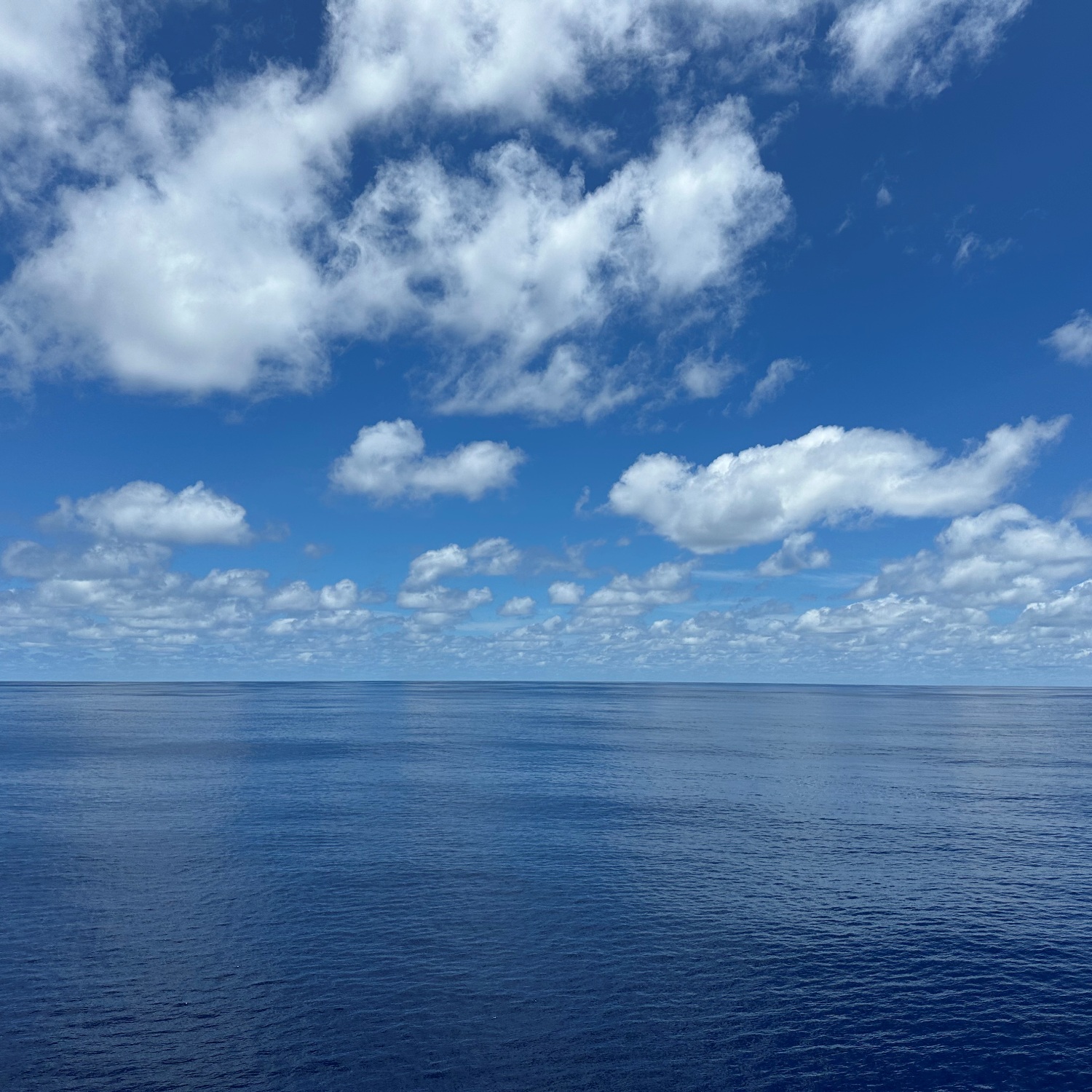Richard N Horne (Member 63,799) was crossing the Indian Ocean from Malaysia to Mauritius on the MS Queen Anne when, just south of the equator, the windless, calm ocean told him the ship was in the doldrums.
Also known as the Intertropical Convergence Zone, the doldrums is the belt around the Earth near the equator where sailing ships would sometimes get stuck because of its lack of reliable prevailing winds.
It is also a region where the ocean surface is warm, which means storm clouds often bubble up and disturb the calm. But Richard looked out at Cumulus humilis and Cumulus fractus clouds over the millpond sea. These fair-weather clouds form on thermals, columns of air rising off the surface. Were he looking out over land, the short-lived clouds would all dissipate away as the Sun went down and stopped heating the ground. But the sea surface doesn’t change much between day and night. It would have carried on producing thermals through the night, and these little Cumulus likely kept forming right through the gentle sway of night.



